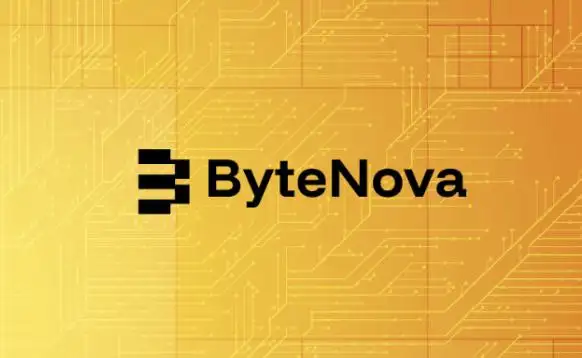
In the grand story of human civilization, money has played the role of both master and servant. It has shaped economies, built empires, and dictated the fate of nations. But money itself is no static force—it evolves, transforms, and, at times, completely reinvents itself.
From the first exchanges of livestock and grain in ancient barter systems to the polished gold coins of kings and emperors, from the birth of paper money in the dynasties of China to the global reign of the U.S. dollar, the very form of currency has changed countless times. Yet, if one were to look closer, a startling pattern emerges.
Each shift in the history of money has occurred faster than the last. The time between each transformation has shrunk, mirroring the accelerating pace of human progress. If history is any guide—and history is always a guide—we may be approaching the final, inevitable revolution: the complete and total supremacy of cryptocurrency. And if the pattern holds, this shift will happen not in a century, nor in half a century, but within the next ten years.
For millennia, barter sufficed. Then, commodity money—gold, silver, shells—emerged in the marketplaces of Mesopotamia and beyond. That system lasted thousands of years before giving way to paper money, a relatively recent invention at just 1,300 years old. From there, the pace quickened.
Where once monetary transformations took thousands of years, they now happen in decades. By analyzing this rapid contraction, applying predictive models, and considering the exponential growth of blockchain adoption, the evidence suggests an unavoidable conclusion:
By 2033, traditional finance may cease to be the dominant force. Cryptocurrency will not merely coexist alongside fiat but will replace it entirely.
The numbers are staggering, but they are also consistent. If we take an exponential decay model—a common formula used in technological adoption and financial shifts—we can apply it to the timeline of money’s evolution.
This formula, used in forecasting rapid technological change, suggests that the next major shift will take place within the next 10 years. In other words, we are entering a world where cryptocurrency is no longer an alternative—it is the system.
The days of banking as we know it are numbered. The monopoly of financial institutions, the reliance on intermediaries, the sluggish movement of money, the inherent fragility of centralized control—these relics of the past will fade, giving way to an era where money exists on-chain, borderless, decentralized, and fully programmable.
Money, like the great empires of history, does not fall overnight. It erodes, little by little, until one day, a new force sweeps in and takes its place. The rise of cryptocurrency is no accident. It is not a trend, nor a passing fascination of technophiles. It is the natural result of forces set in motion long ago—forces that have been accelerating with each passing decade.
First, there is the march of technology. Every great leap in finance has come on the heels of a breakthrough in communication or security. The printing press made banks possible. The telegraph made cross-border transactions instantaneous. The internet brought banking to every home. Now, blockchain is eliminating the need for banks entirely. Money is no longer bound by paper, borders, or institutions—it exists as pure code, faster and more secure than anything before it.
Then, there is the ever-growing complexity of global trade. The world is no longer a collection of isolated economies, each with its own currency and rules. It is a tightly wound network, where value must move freely, instantly, without interference. The Silk Road traders of old waited months for payments to clear. The businessmen of the 20th century waited days. The new generation? They will wait seconds. Anything slower is simply unacceptable.
And finally, there is trust—perhaps the most powerful force of all. Money, at its core, is belief. It holds value because people agree it holds value. But when trust is broken, so too is the system that depends on it.
The financial crashes, the hyperinflations, the silent theft of wealth through government printing presses—these are the cracks in the foundation of traditional finance. And in those cracks, a new system is rising. One where trust is not placed in banks or politicians, but in mathematics, in open ledgers, in code that cannot be rewritten by the hands of a failing institution.
These forces are not slowing down. They are accelerating. Just as the horse gave way to the automobile, and the telegram to the internet, so too will fiat money bow to the rise of cryptocurrency. And when the dust settles, the only question will be: Who saw it coming, and who was left behind?
But revolutions, no matter how inevitable, require bridges. For cryptocurrency to become the sole financial system, it must be more than an asset class—it must be functional, accessible, and seamless. This is where The Connecter Wallet is quietly playing its role in history.
As a non-custodial, multi-chain crypto wallet, The Connecter is addressing the most pressing issues that have kept cryptocurrency from fully overtaking fiat.
It eliminates the need for seed phrases, using MPC (Multi-Party Computation) and 3D Facial Biometrics to ensure users never lose access to their funds. It enables cross-chain swaps in under 5 minutes, a feat unheard of in traditional finance. It allows users to off-ramp crypto to cash and gift cards, eliminating one of the last remaining hurdles to mass adoption.
Perhaps most importantly, it is secure, leveraging Chainalysis for fraud detection, making blockchain-based finance not just viable—but safer than traditional banking.
The great revolutions of history—the printing press, the industrial revolution, the internet—were not fully understood in their time. The old guard clung to the past, dismissing the new as temporary, as untrustworthy, as a passing fad.
And yet, the new always wins.
We are witnessing the same cycle today. Governments, banks, and institutions insist that cryptocurrency is too volatile, too young, too unregulated to replace traditional finance. But history is rarely kind to those who bet against progress. As we inch closer to 2033, the writing on the wall is clear. Cryptocurrency is not just another phase in the history of money. It is the final, inevitable chapter.
And those who embrace it now—those who adopt The Connecter Wallet and move toward a world free of intermediaries—will not just survive the shift. They will thrive in it.
On-Chain Media articles are for educational purposes only. We strive to provide accurate and timely information. This information should not be construed as financial advice or an endorsement of any particular cryptocurrency, project, or service. The cryptocurrency market is highly volatile and unpredictable.Before making any investment decisions, you are strongly encouraged to conduct your own independent research and due diligence
Tags :

0 Comments
Show More

Circle USDC, led by Nima Elmi, holds early talks with the Nigeria's Ad Hoc Committee on Cryptocurrency.

Volatility drives trader behavior. See how major exchanges use targeted competitions to channel market chaos into structured trading volume.

Backed by NVIDIA and a16z, ByteNova is unlocking the full potential of Web3 and Edge AI
On-Chain Media is an independent, reader-funded crypto media platform. Kindly consider supporting us with a donation.
bc1qp0a8vw82cs508agere759ant6xqhcfgcjpyghk
0x18d7C63AAD2679CFb0cfE1d104B7f6Ed00A3A050
CBaXXVX7bdAouqg3PciE4HjUXAhsrnFBHQ2dLcNz5hrM
Contains the last 12 releases